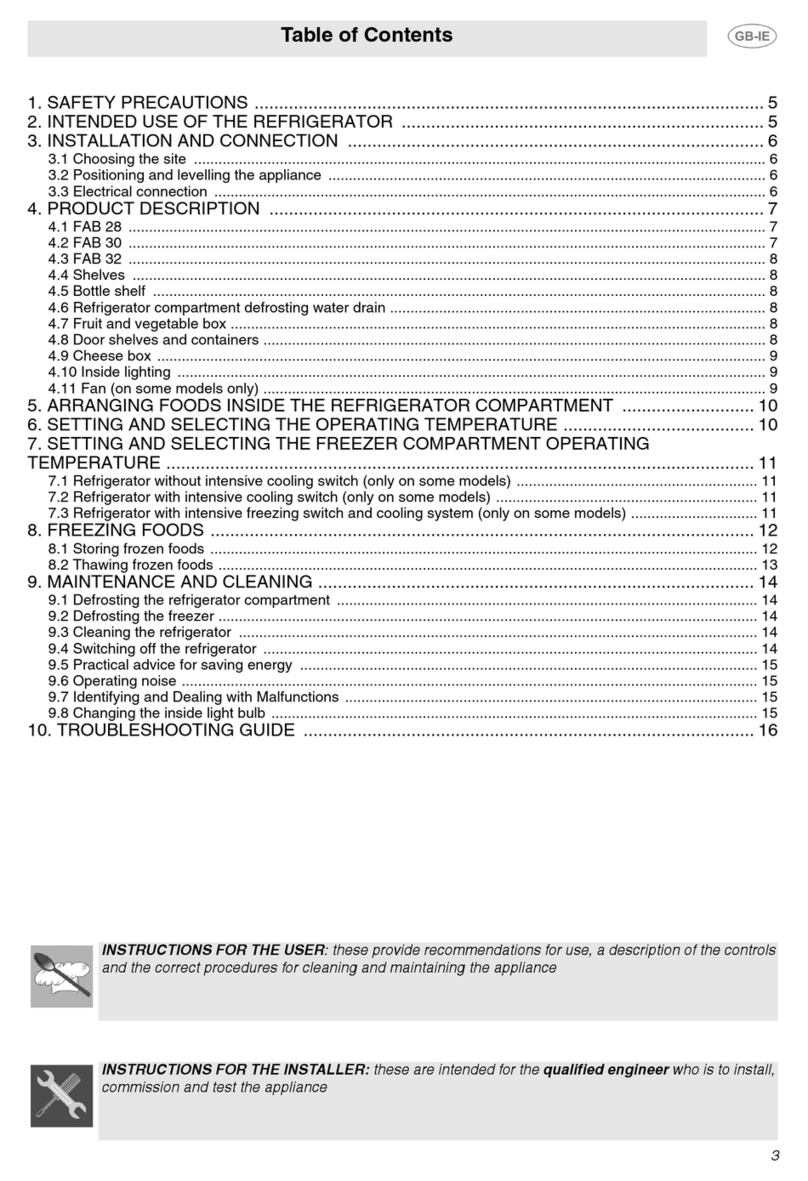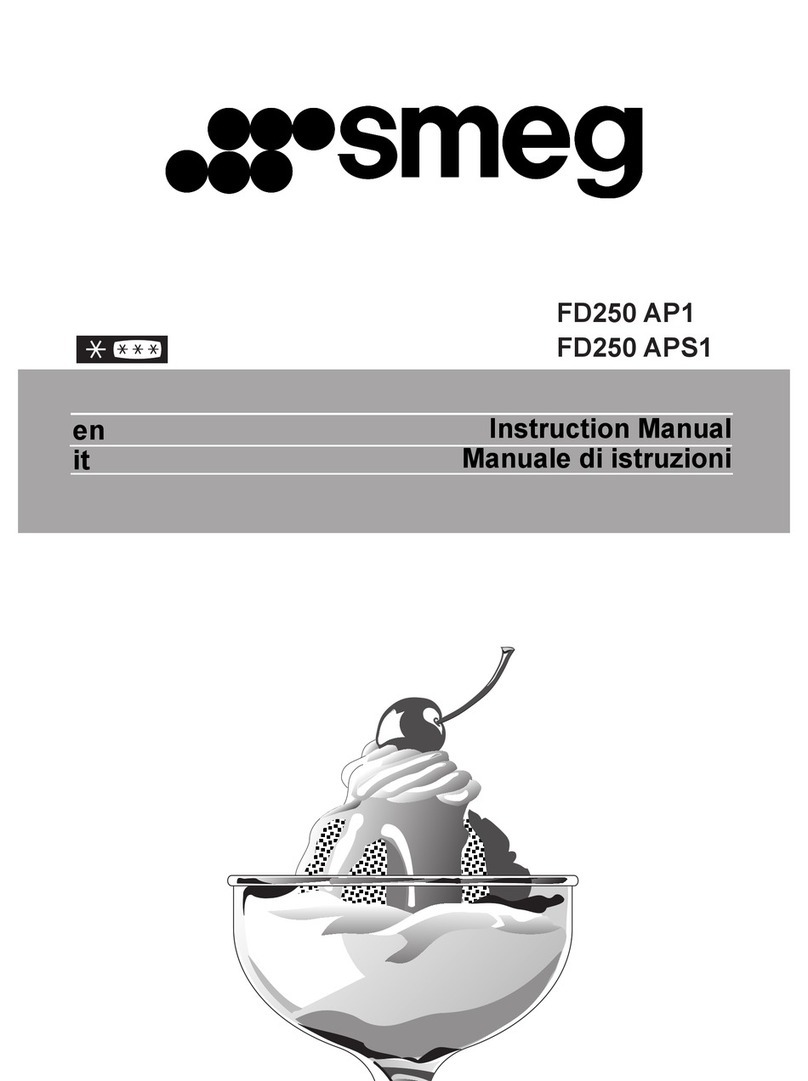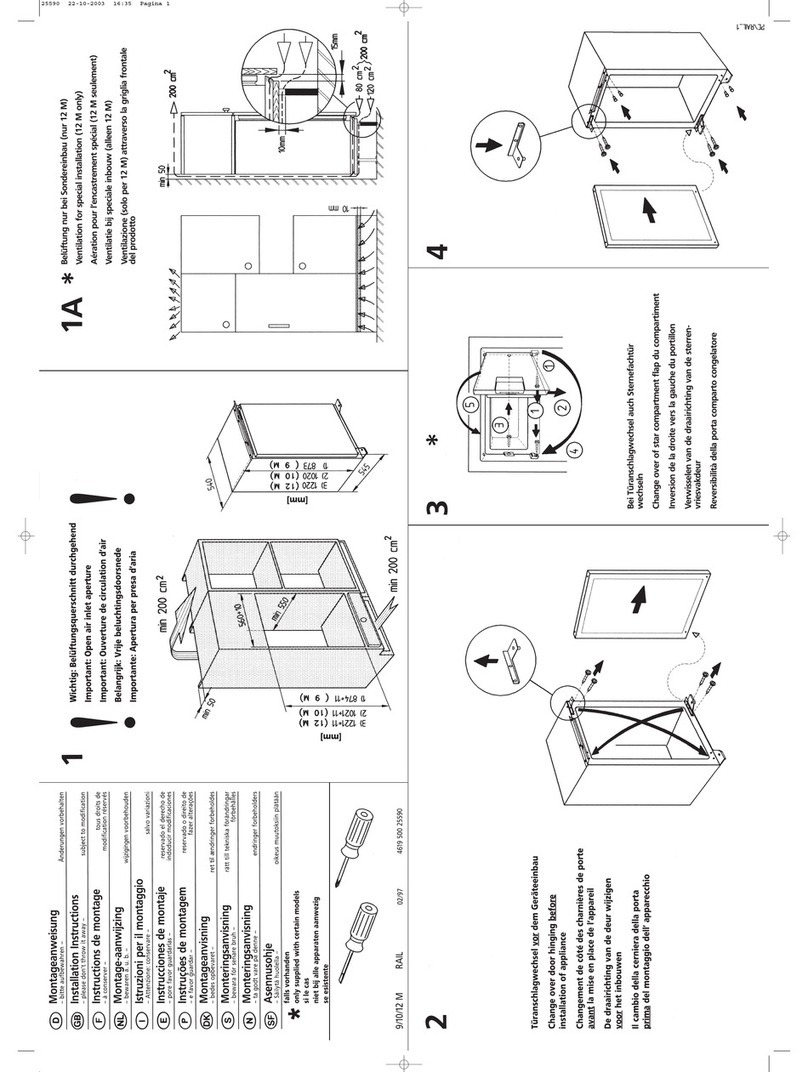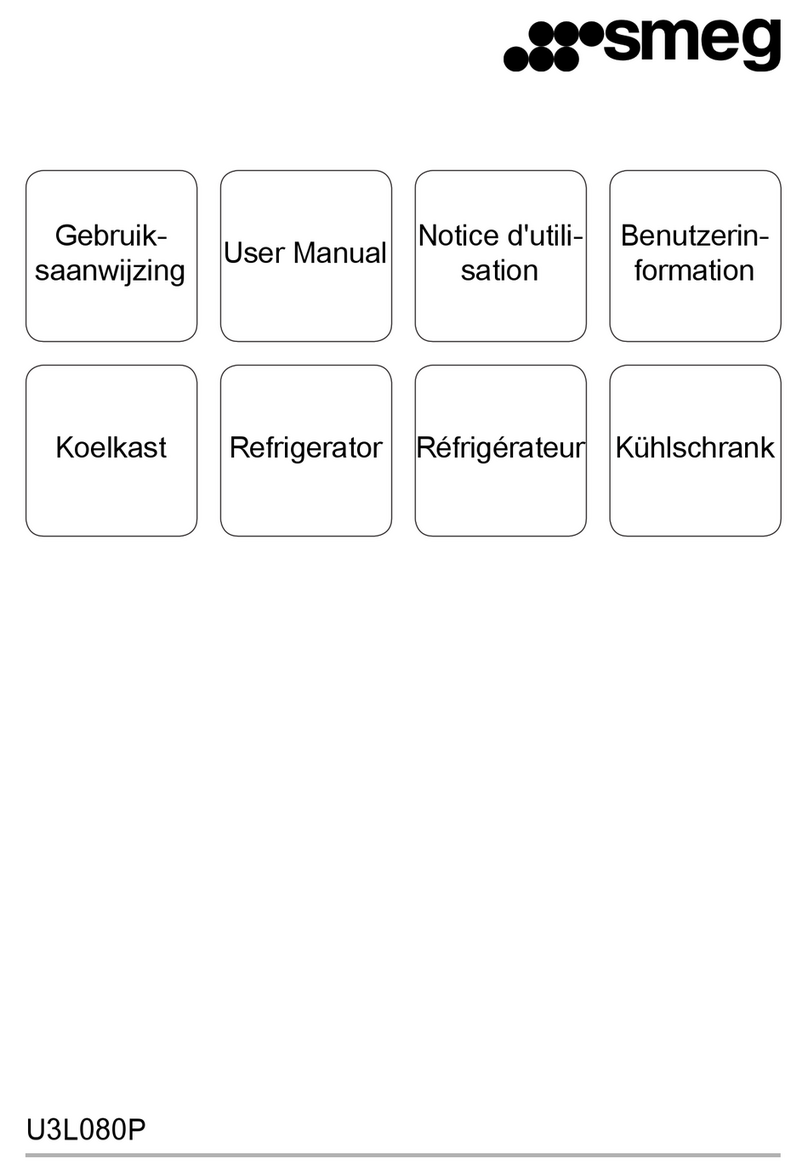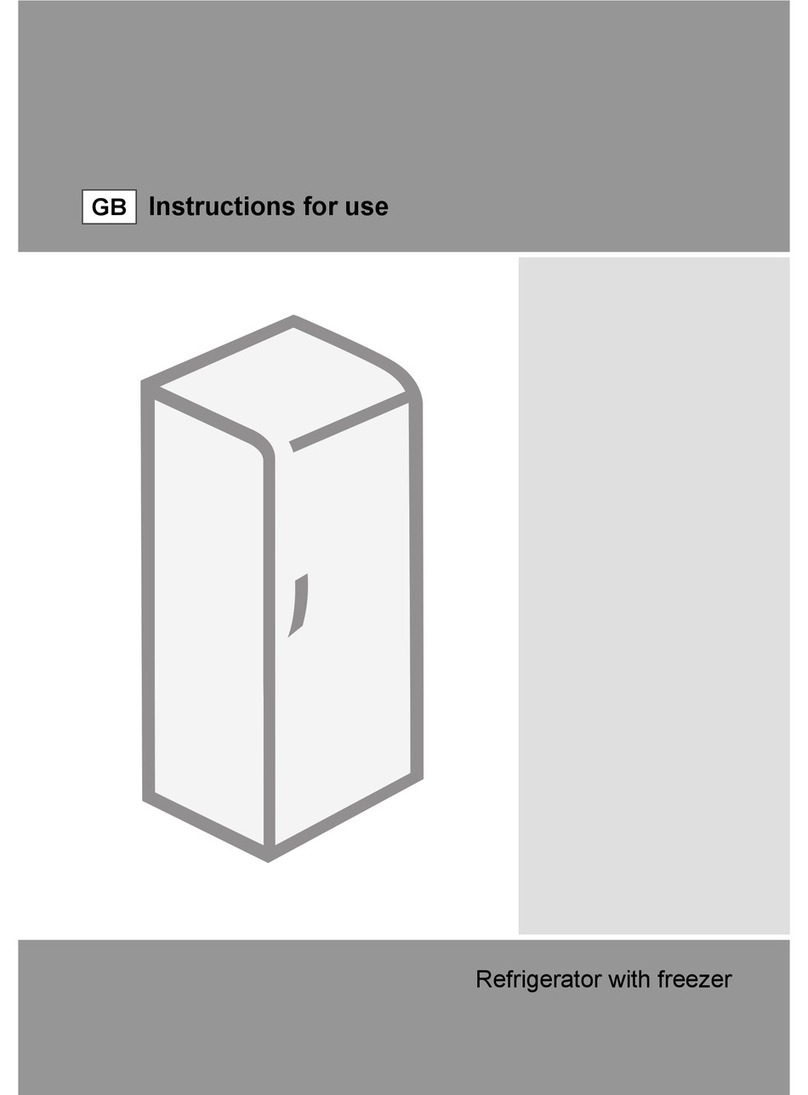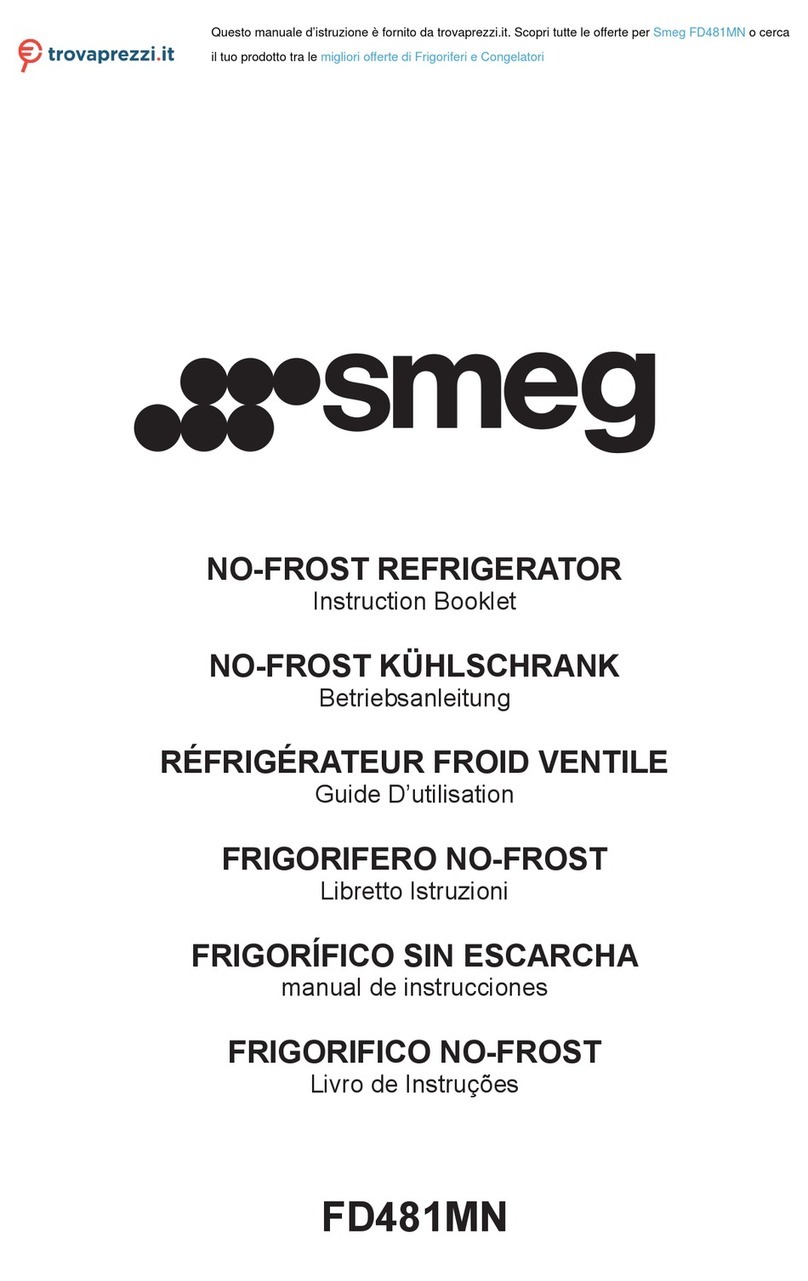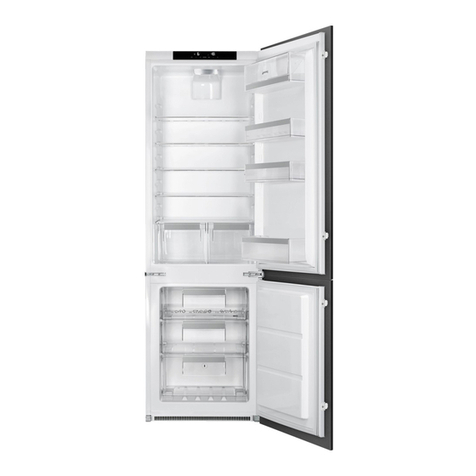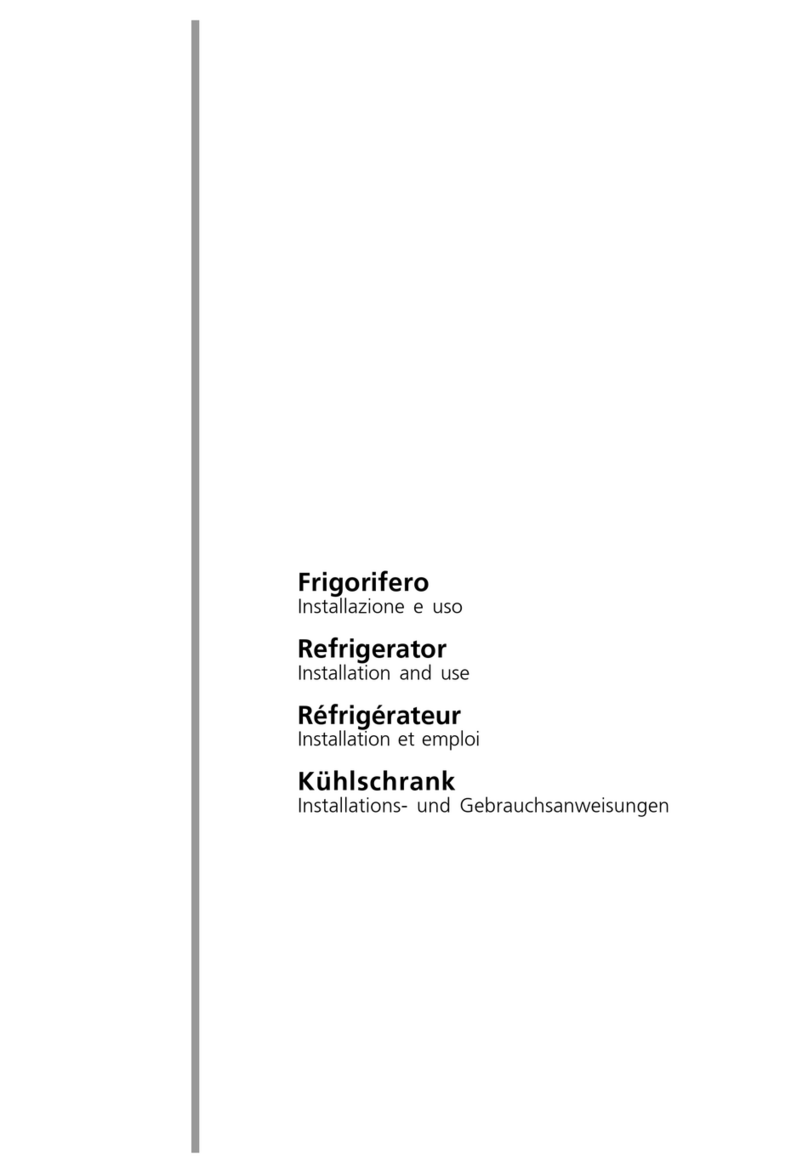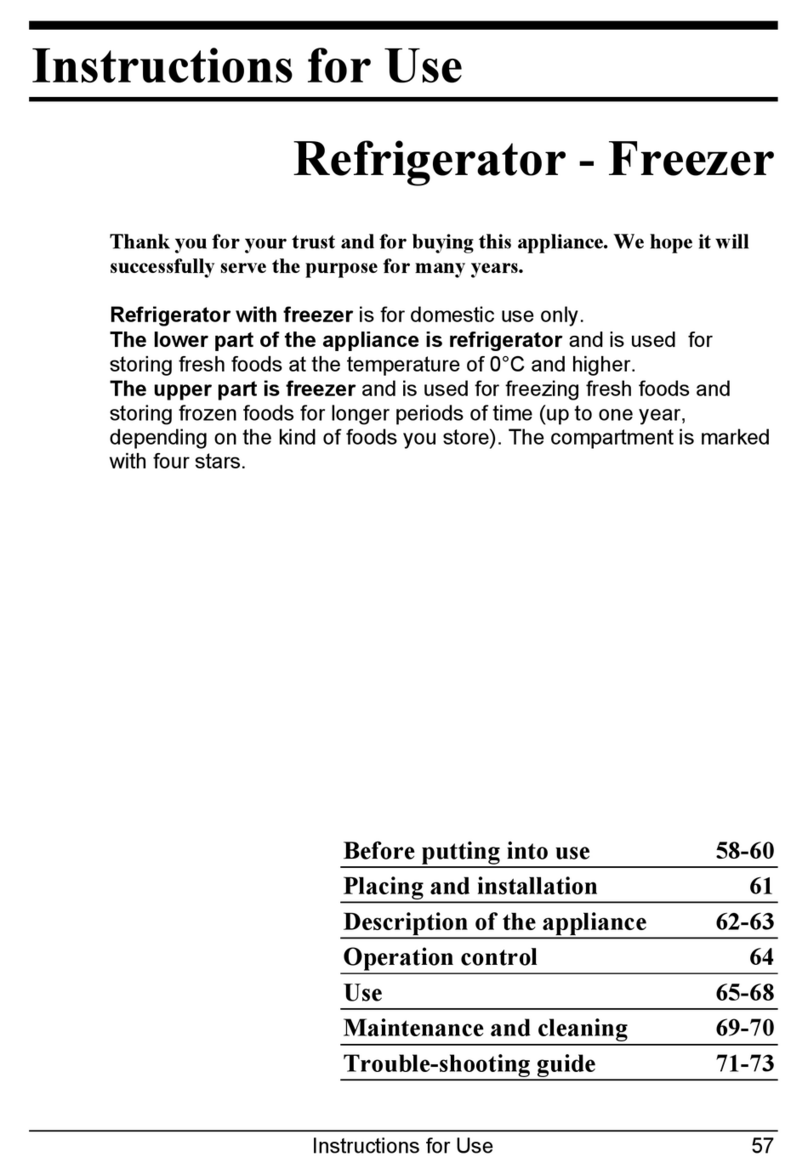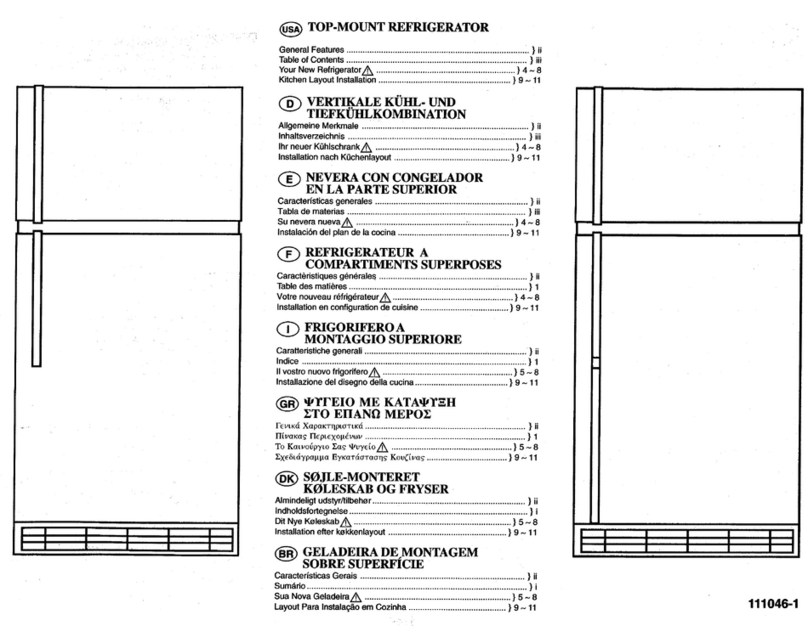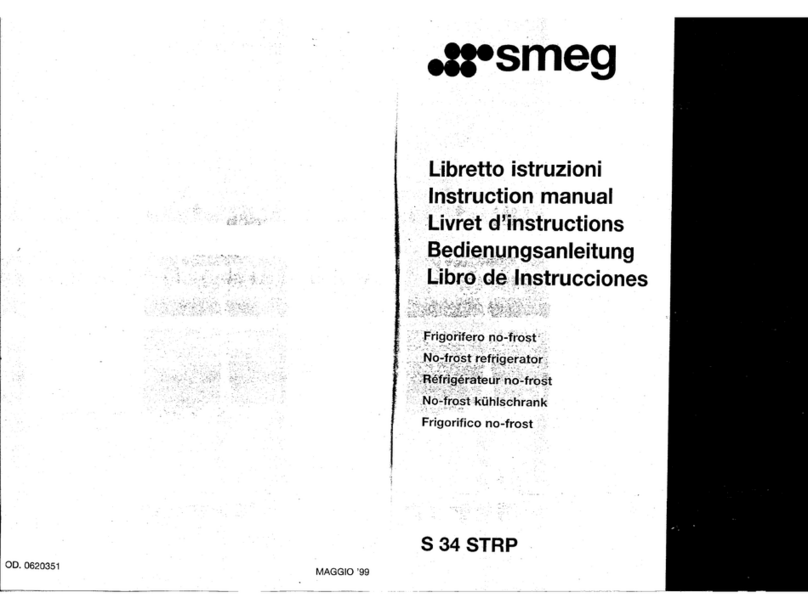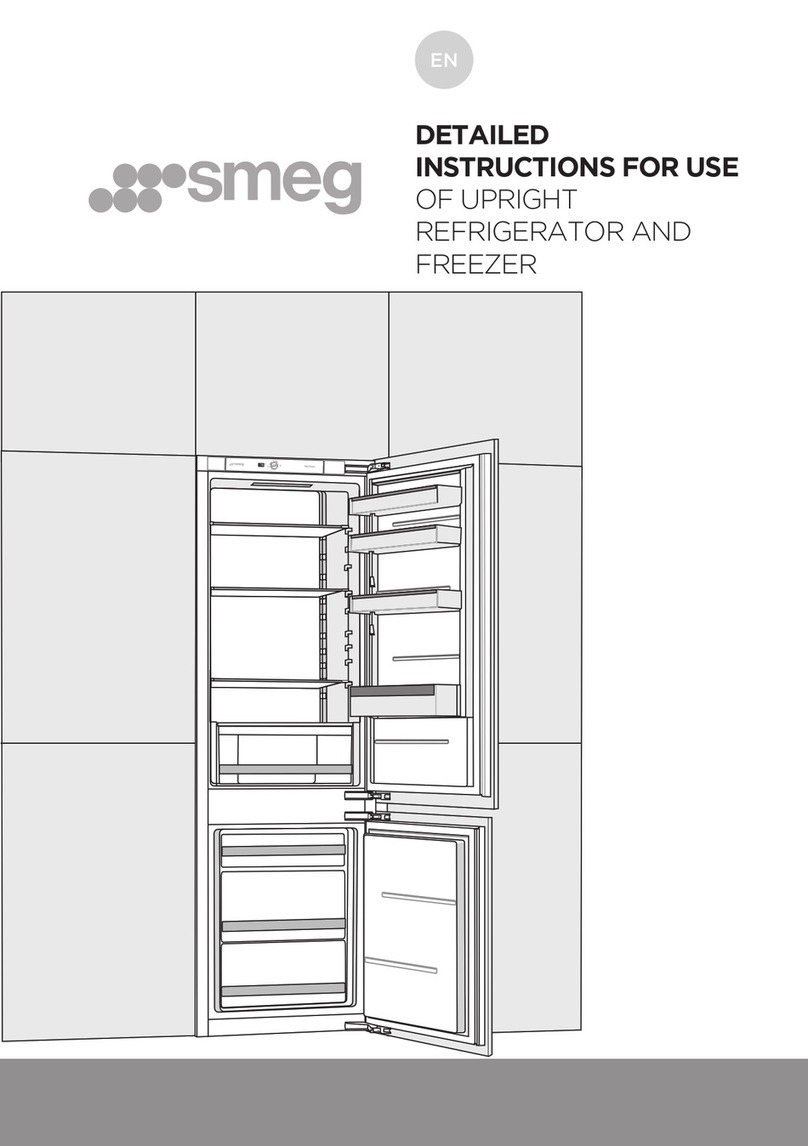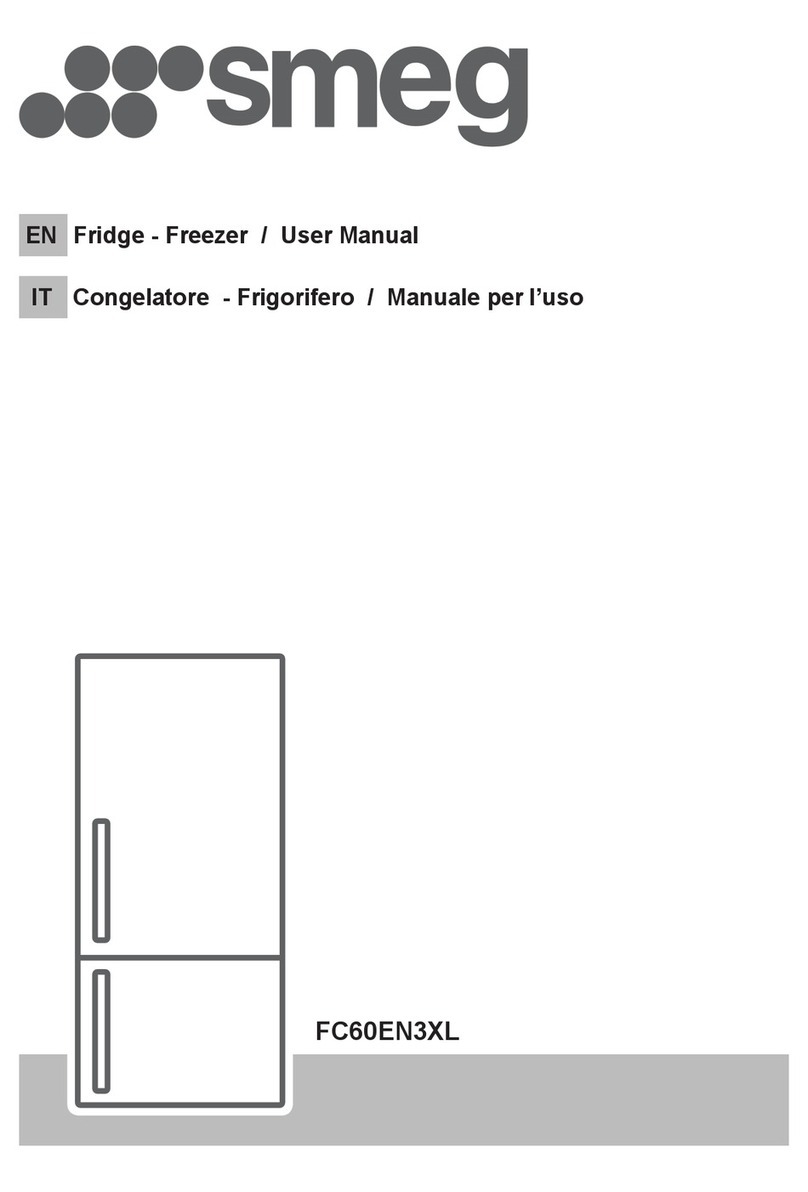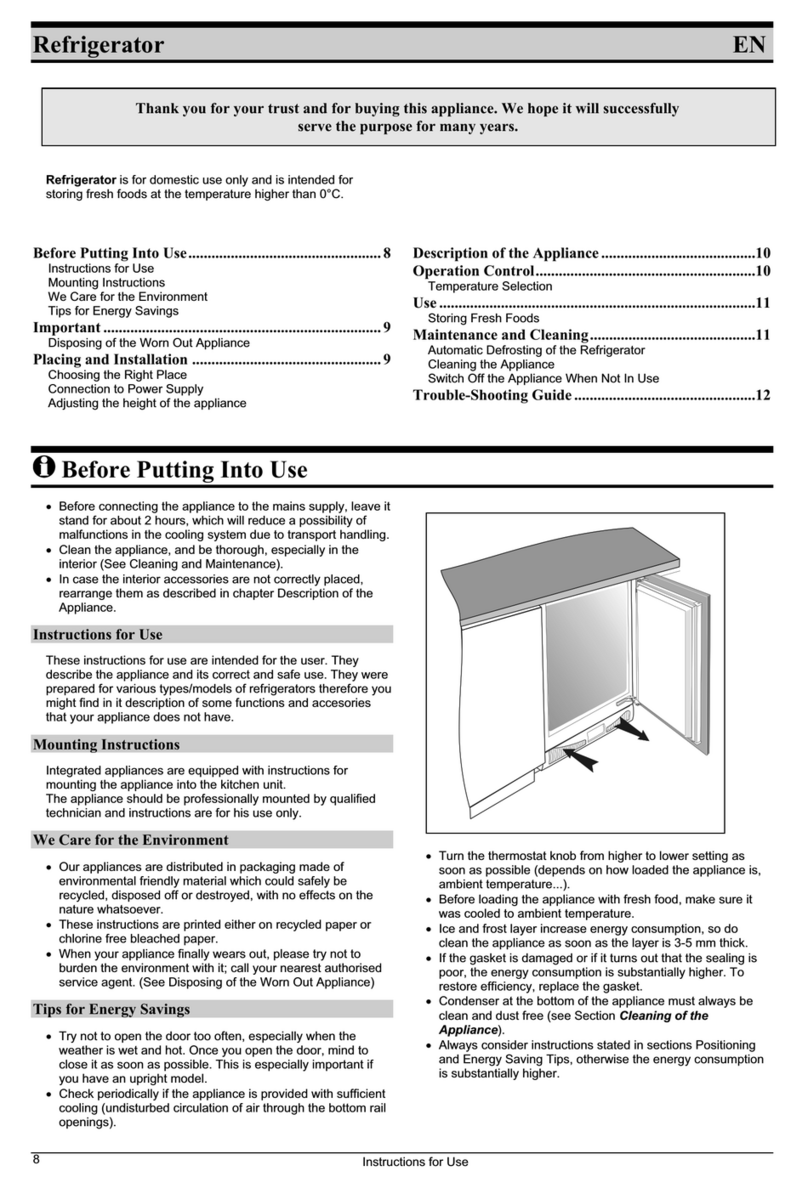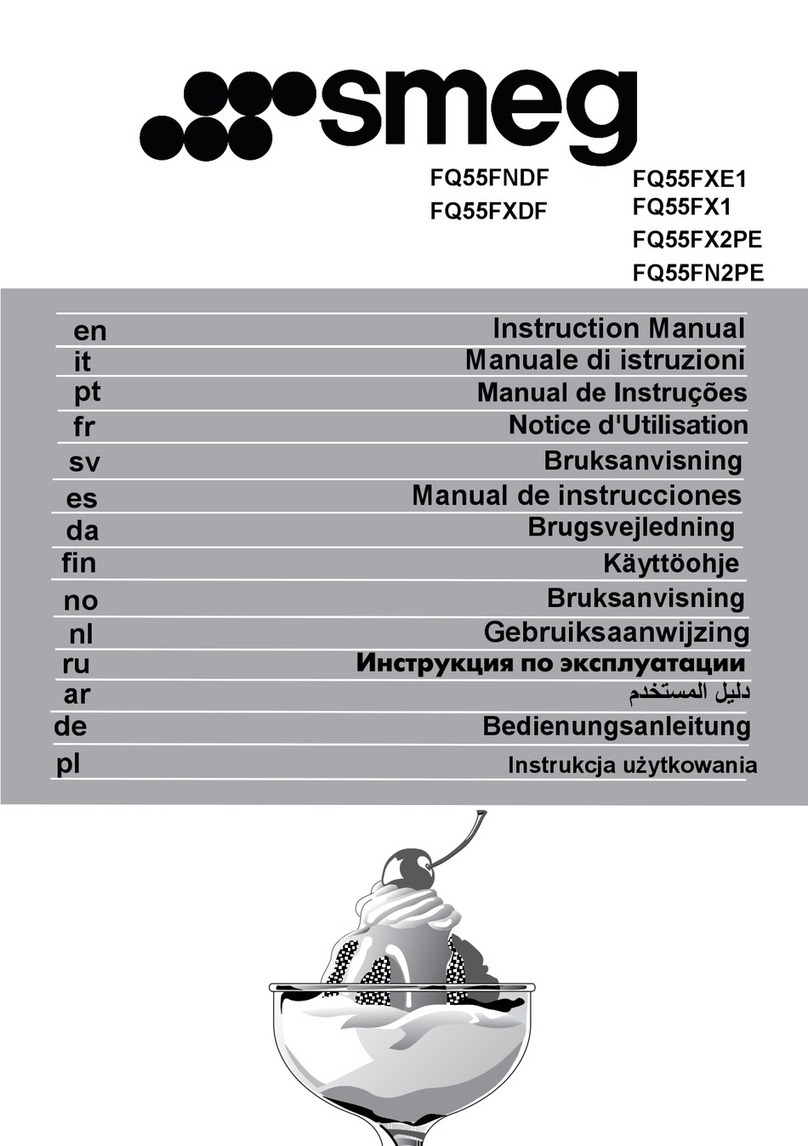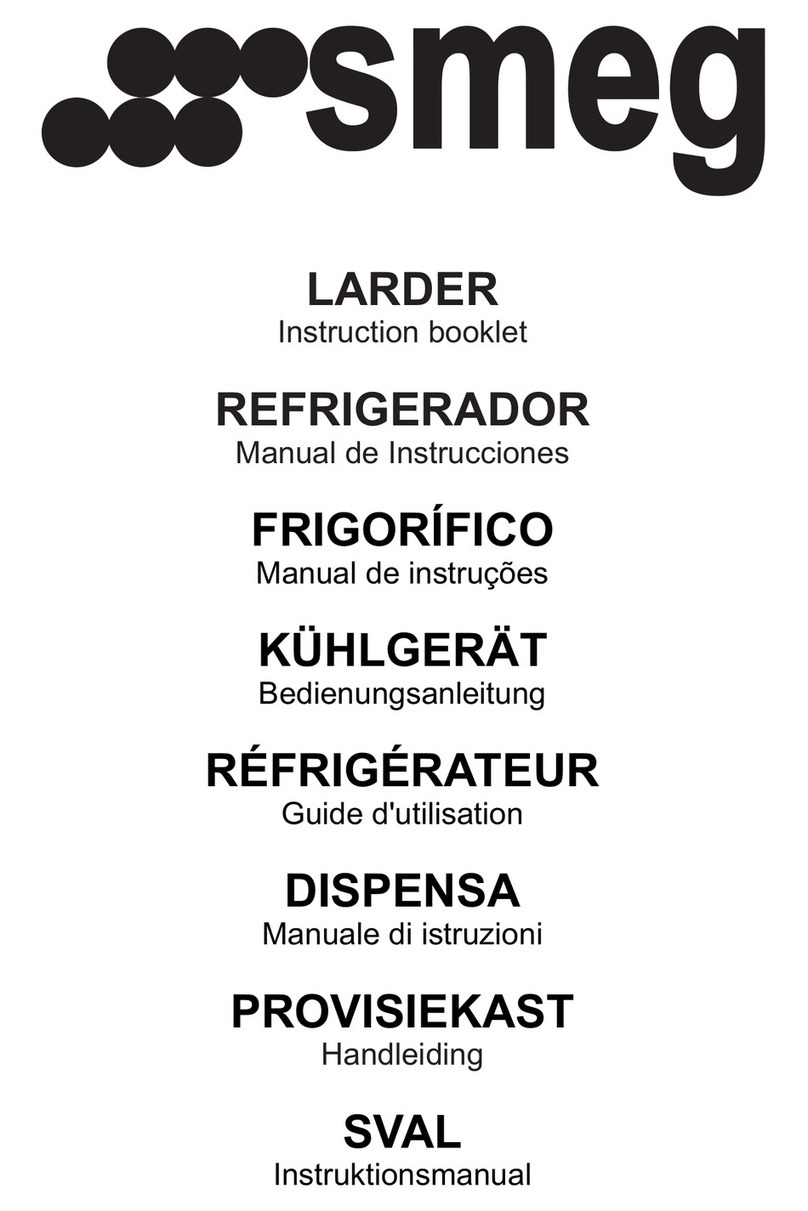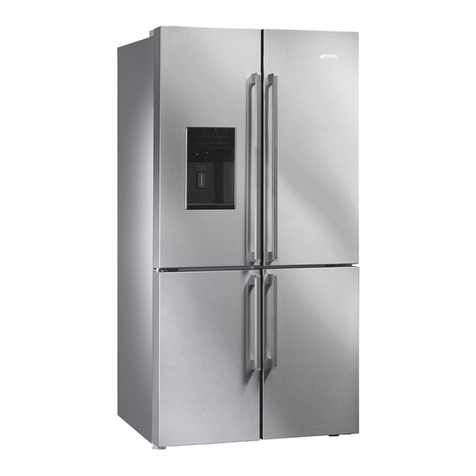
EN
5
Do not use steam or steamed
cleaning materials for cleaning the
refrigerator and melting the ice inside.
Steam may contact the electrified
areas and cause short circuit or
electric shock!
Do not wash the product by spraying
or pouring water on it! Danger of
electric shock!
In case of malfunction, do not use
the product, as it may cause electric
shock. Contact the authorised service
before doing anything.
Plug the product into an earthed
socket. Earthing must be done by a
qualified electrician.
If the product has LED type lighting,
contact the authorised service for
replacing or in case of any problem.
Do not touch frozen food with wet
hands! It may adhere to your hands!
Do not place liquids in bottles and
cans into the freezer compartment.
They may explode.
Place liquids in upright position after
tightly closing the lid.
Do not spray flammable substances
near the product, as it may burn or
explode.
Do not keep flammable materials and
products with flammable gas (sprays,
etc.) in the refrigerator.
Do not place containers holding
liquids on top of the product.
Splashing water on an electrified part
may cause electric shock and risk of
fire.
Exposing the product to rain, snow,
sunlight and wind will cause electrical
danger. When relocating the product,
do not pull by holding the door
handle. The handle may come off.
Take care to avoid trapping any part
of your hands or body in any of the
moving parts inside the product.
Do not step or lean on the door,
drawers and similar parts of the
refrigerator. This will cause the product
to fall down and cause damage to the
parts.
Take care not to trap the power cable.
1.1.1 HC warning
If the product comprises a cooling
system using R600a gas, take care
to avoid damaging the cooling system
and its pipe while using and moving the
product. This gas is flammable. If the
cooling system is damaged, keep the
product away from sources of fire and
ventilate the room immediately.
C
The label on the inner left
side indicates the type of gas
used in the product.
1.1.2 For models with
water dispenser
Pressure for cold water inlet shall
be maximum 90 psi (6.2 bar). If
your water pressure exceeds 80
psi (5.5 bar), use a pressure limiting
valve in your mains system. If you
do not know how to check your
water pressure, ask for the help of a
professional plumber.
